Have you ever looked up in the sky and noticed birds circling above? Well, there are a few reasons why birds do this. The main reason is to conserve energy, but find out our detailed answer below!
What does it mean when Birds Fly in a Circle?
It is a question that has been asked to ornithologists for years now, why are birds circling above me? There are many reasons why this may happen. But, don’t worry it isn’t because of you! They aren’t going to dive on you!
Conserve energy
Flying is a lot of work for birds, staying up in the sky is the safest place for them as they are much less likely to become a fox’s dinner while flying. This is why birds typically stay out of sight and in the air away from predators.
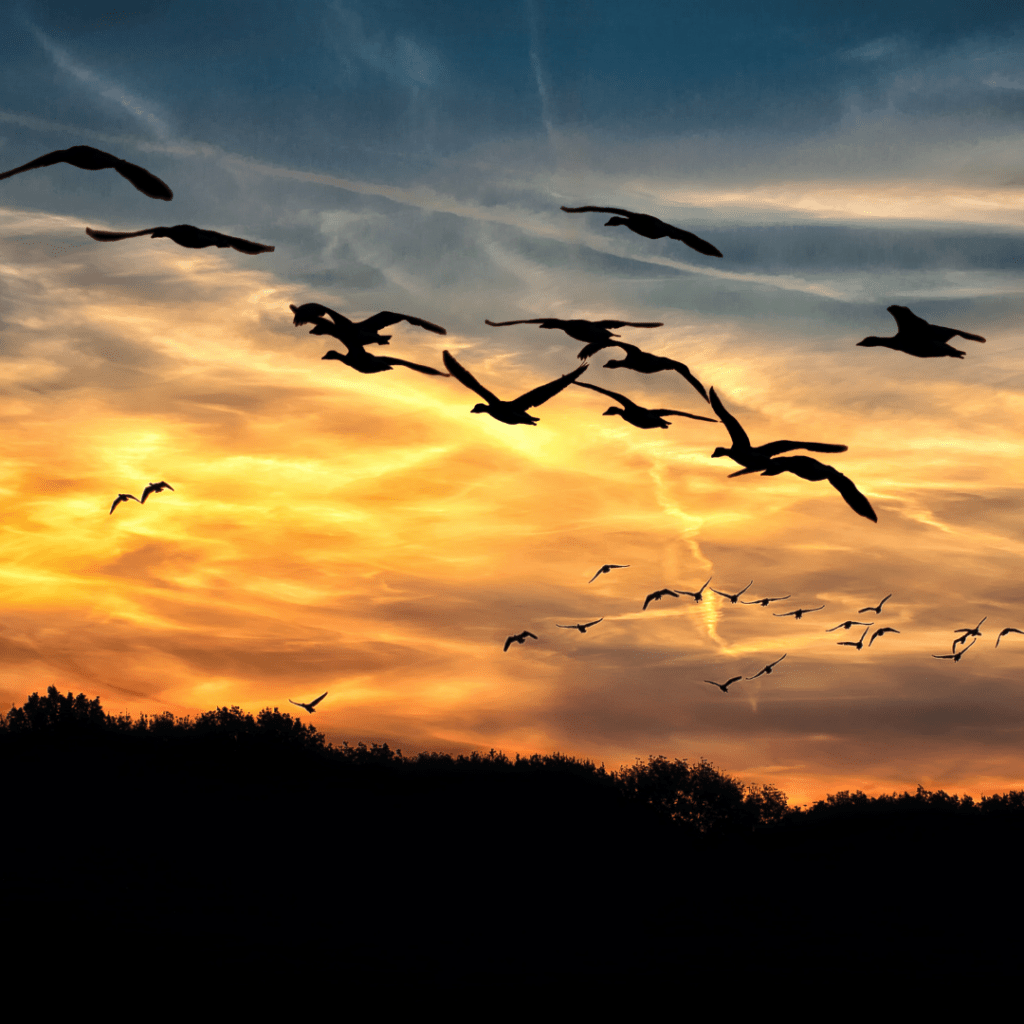
This is a lot of work for them though constantly flapping their wings to keep from falling to the ground is a big ask on their small muscles and bodies. This is why they stay in circles they can glide more.
Gliding allows the bird just to extend their wings and use wind movements to move along the sky. Many birds glide in circles to stay out of reach from predators and circles are the least strain on their bodies which explains why it is common to see birds circling above a lot of the time.
Birds have survived for millions of years due to their adaptation to flying, which keeps them out of reach from all of their predators except other birds of prey such as falcons and hawks but they are much less rare.
They want to stay in the air, and circling is the easiest way to do so without wasting much energy.
Why do Birds fly in circles before a storm?
Add to the flock
Birds are much safer from predators when they stick together. If a hawk or bird of prey spots a lone bird flying it is much easier pickings than 10s of birds flying together.
This is an evolutionary benefit that birds have used for their survival for millions of years, and flying around in circles gives other birds the chance to join the flock.
It is a pretty impressive sight, seeing 10s of birds circling above, and they make a lot of noise, squawking and chirping. This attracts other birds to come and join which helps them all survive longer.

Searching for Food
Birds are constantly eating, I mean have you ever been to a big city and seen the pigeons constantly picking at the waste and food scraps left behind. Or at your bird feeder seen the same birds keep coming back?
Birds have a very fast metabolism rate, and can’t use reserves (burning excess fat) to survive for long, because well they aren’t big at all!
This means that they have to be eating almost constantly to be able to survive, and yes this does mean they poop a lot which I am sure you have also noticed if you have a bird feeder!
Birds will circle above looking for good spots to eat and drink. If you see a cardinal above circling, then it may be looking for some delicious apples, or insects to load up on.
Circling gives birds a chance to look a bit more in-depth into an area for food or water without diving down dn then flying back up which uses up a lot of their precious energy.
As well as constantly eating birds also need to drink a lot, and if a bird is in a dry climate then it may be necessary for them to circle above to search for ponds, streams, and lakes in need of water.
This is also a great tip for beginner bird watchers, if you are in a dry climate, or really any climate stay around ponds, and lakes as birds need to get a drink sooner or later. Then, you can grab a photo while they are fuelling up!
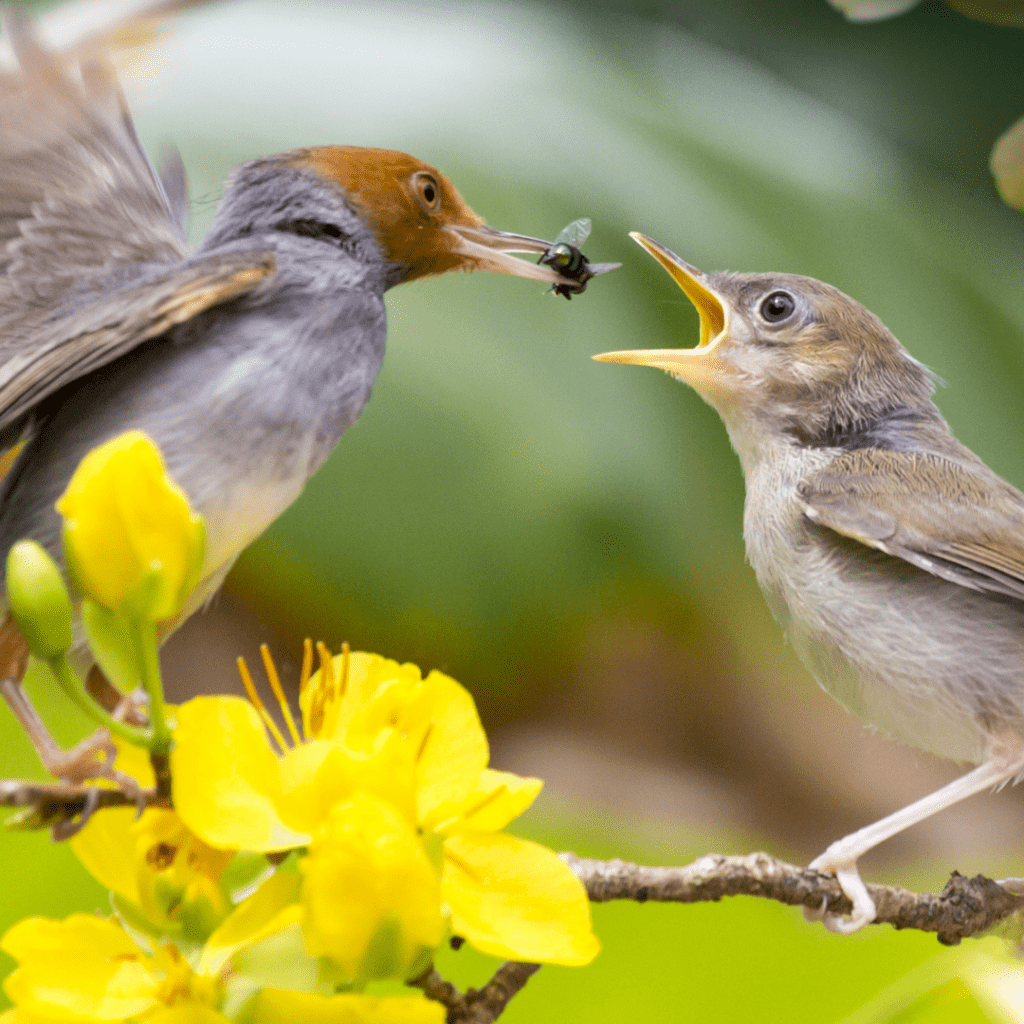
Bird Fact!
In some instances, some songbirds give up their meals for a good mate. This is often referred to as gifts and some birds give them to their mate to solidify the relationship! Would you give up your food for your loved one?
Migrating
Many migratory birds have to fly thousands of miles each season. Birds migrate to areas that are warmer in the fall, have more food, for nesting, or a mixture of the three. This requires a lot of time and work for the birds.
And, it can get exhausting for them! It is not uncommon for migrating birds to take a quick rest by gently soaring in circles to conserve some energy before they keep going.
It takes a lot more energy to fly down to the ground than to fly back up than it does to fly in circles so it is easier on our feathery friends to not completely stop but to continue flying in circles instead.
What is a Thermal?
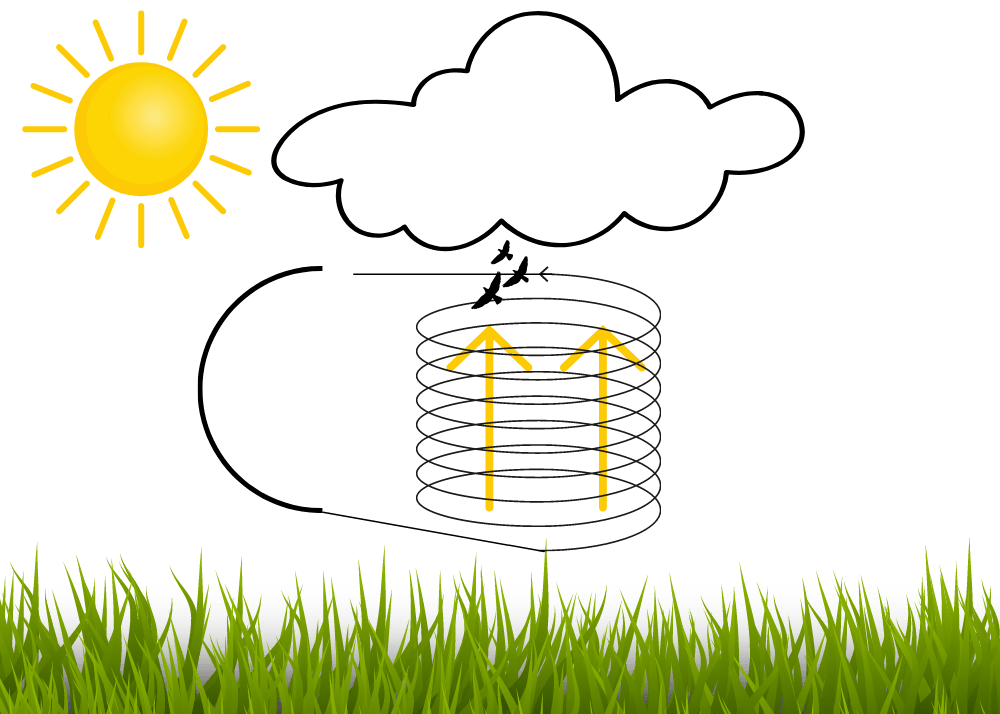
The reason why birds can glide in circles for hours without flapping their wings much is by utilizing thermals. Thermals are upward currents of warm air, that carry and keep birds in the air with ease.
These are the same currents that humans use for gliding in gliders or paragliders. They are super useful to birds and mean that birds can stay up in the air for much longer.
Thermals help millions of birds every year, and it is said that birds couldn’t survive without them. Birds find these hot rising pockets of air currents just while flying and once they find one they don’t have to flap their wings very much.
When a bird finds a thermal they typically fly around in circles to stay in the current of the air while soaring upwards, which is known as thermal soaring. This reduces the energy they use when they typically fly up and help them to get up to the sky quicker and easier!
The currents carry the birds to where they are going which is why sometimes birds can get off course like this rare raptor being seen over 5000 miles away from its natural habitat.
Birds follow the currents and if they are not careful if they can take them thousands of miles without the birds noticing.
Migratory birds travel thousands of miles every season, and it would be impossible for them to flap their wings the whole way. By using thermals birds can glide through the air high up without much risk from predators or using up too much energy.
So, next time you look up at the sky and see birds soaring hundreds of feet above you, know that they are probably using thermals!
What types of birds soar using thermals?
Pelicans
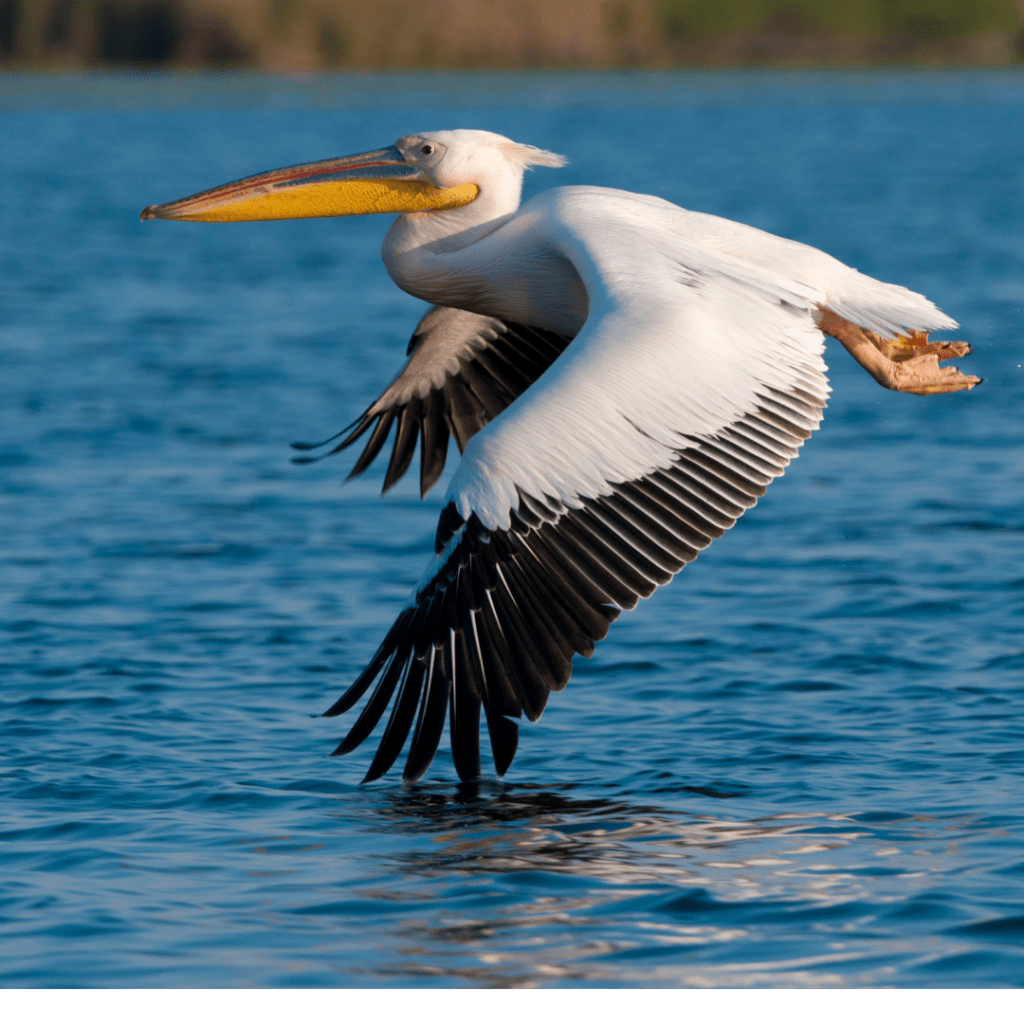
These fish-eating birds found typically by the beach are masters of thermals. Pelicans migrate twice wear and then move south to warmer waters before returning north once summer is back.
This requires a lot of flying for these birds, which is why they have to utilize thermals to be able to get where they need to go without dropping dead from exhaustion.
Since pelicans are pretty large and have a long wingspan, they can pick up thermals and travel quite fast about 56 km per hour this gets them down to Mexico and Panama for warm weather in no time, and with minimal effort.
Canadian Geese
Goose migrate long distances, they typically tend to breed in Canada, which is where they get the name! Then in the colder months, they fly down to the middle to the south of the United States.
Since they are traveling long distances they have to be able to use thermals effectively. They are known to be seen flying in formation typically in thermals which reduces their drag and allows them to go even further.
Most larger birds such as geese are very effective when using thermals since they have longer wingspans they can spread out and soar a bit easier and quicker than a small bird such as a robin.
Crows
I feel whenever I look up in the sky I can see something flying higher above than anything else. Most of the time it ends up being a crow.
These often frowned upon birds have powerful wings and fly up thousands of feet to thermals. They are another larger bird which makes getting up and using thermals a bit easier for them.
There are loads more bird species that use thermals! Since there are powerful currents of air it only makes sense for birds to use them on their hundreds to thousand-mile journeys for migration.
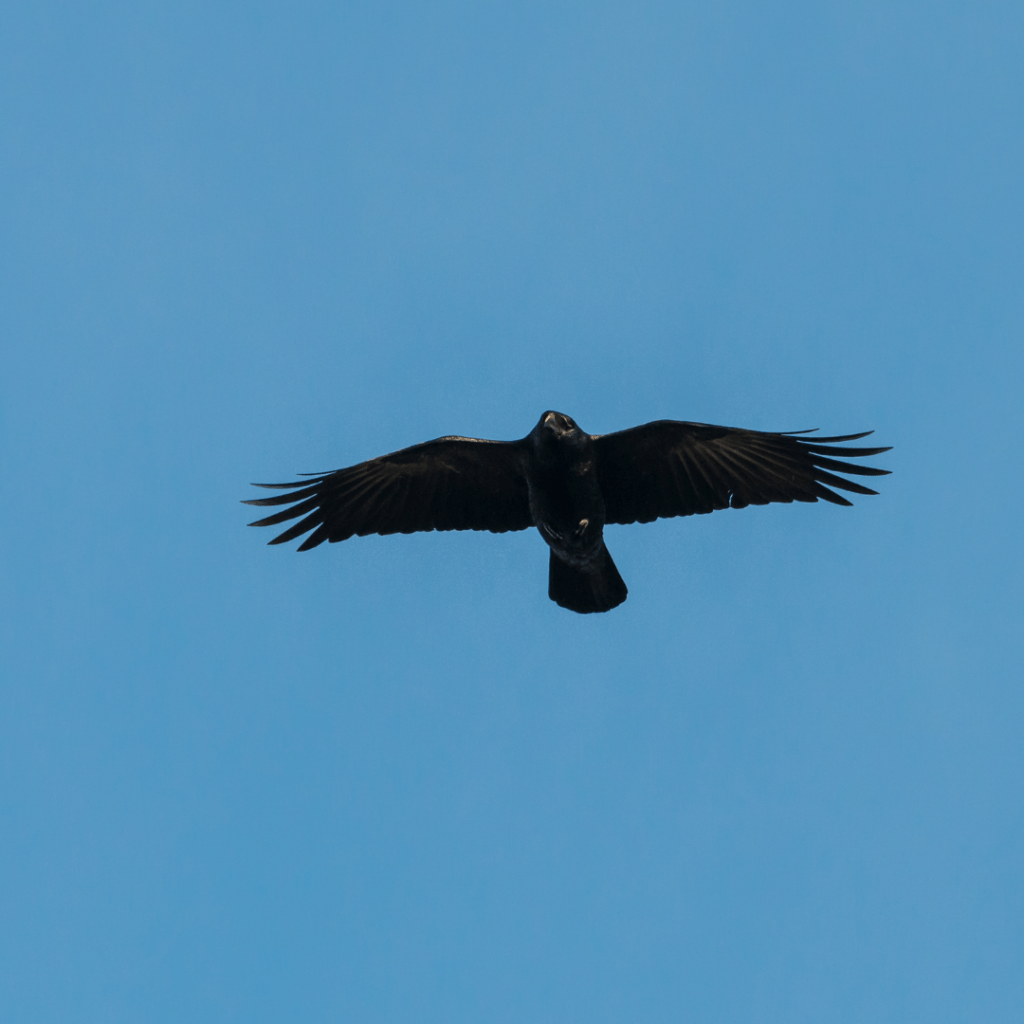
Birds are such powerful and majestic creatures and now I hope you have an understanding of why birds tend to fly in circles a lot of the time.
Wrap up
So, next time you see a bird flying in a circle without flapping its wings much, you know why and how it can stay afloat without much movement!
Let me know what cool birds you have spotted this week and Happy Birding

James has always been an avid outdoorsman. Since a kid, he kept a journal of all the different birds and species he saw. Now he wants to share his passion with other birders with Happy Birding!
